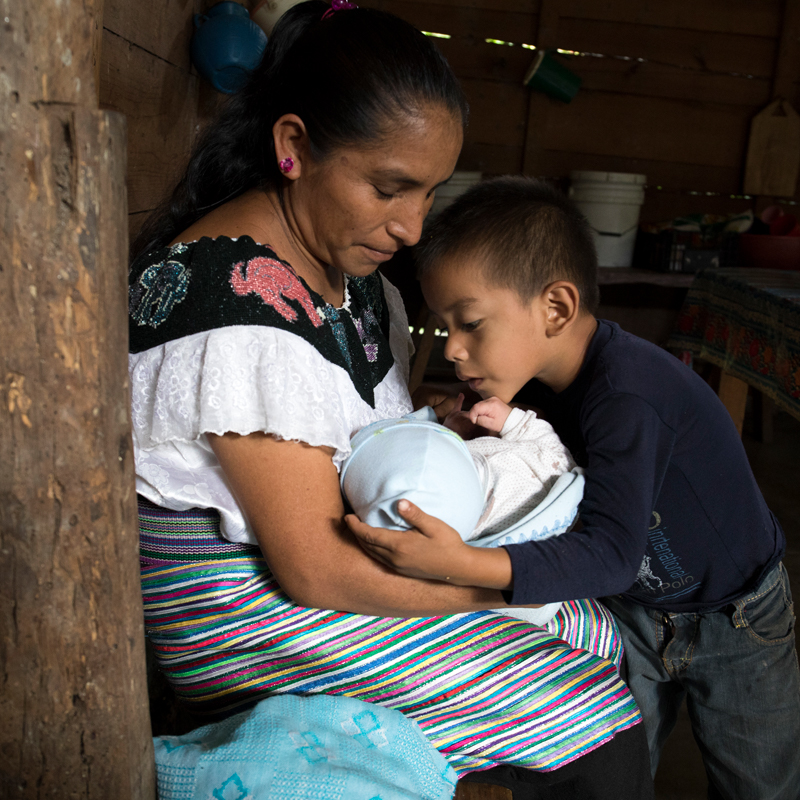Originally published on thisdayonline.com on April 29, 2006, MacArthur Africa Office Director Kole Shettima calls attention to the preventable deaths of mothers.
I was tempted to write this piece last year after the Bellview and Sosoliso plane crashes. That could be misinterpreted as being insensitive to the hundreds of Nigerians and Non-Nigerians who perished. Key leaders in government and the private sector are no longer with us. Many children are orphaned and men and women are widowed. Bright kids, the future of our country, died in a horrible condition.
The government responded appropriately. Bellview and Sosoliso fleets were grounded. Some airlines lost their licenses. Other airlines were subjected to thorough inspections. A Commission of Inquiry set-up on the aviation industry has recommended far-reaching reforms. Even before the report was submitted, the government spent billions of naira to improve airspace safety and security. Airlines are now subject to sporadic inspections. No one will quarrel with the actions of the government, which reflect public mood. Similar stringent measures were taken against EAS when its plane crashed in Kano, killing about 140 people in May 2002.
On May 8, International Safe Motherhood Day, it is important to focus on another national tragedy happening right before our eyes, but which seems invisible. According to the Federal Ministry of Health, every year an average of 800 Nigerian women die for every 100,000 live births. In other words, not less than 54,000 women die every year in the process of giving birth. This translates to one woman dying every 10 minutes as a result of pregnancy and pregnancy-related factors. The estimated average of 800 masks regional disparities of between 166 per 100,000 live births in the Southwest and 1,549 per 100,000 live births in the Northeast. In addition, for each maternal death, 15 to 20 women suffer from a related health problem, such as ruptured uterus or pelvic inflammatory disease.
To put it in global context, while Nigeria accounts for two percent of the world’s population, we account for 10 percent of maternal mortality. Of all countries in the world, Nigeria has the second largest number of annual maternal deaths. As one wise person said, “If you want to know the quality of life of a country, find out how it treats its women.” It was Professor Oladipo who asked why women are disposable. Certainly we can do better and we must.
Even by the conservative estimate of 54,000 maternal deaths per annum, that number is equal to 450 EAS crashes each year. Why is there no public outcry? How many editorials have been written on maternal mortality? How many newspapers have carried stories of maternal death on their front pages? If our government took drastic steps to respond to the plane crashes, what actions will it take – and what actions will we all take - to end this crisis?
Fortunately, the reduction of maternal mortality and morbidity is an aspiration of the Millennium Development Goals. The Nigerian government has committed itself to a 75 percent reduction in maternal mortality by 2015. We have already seen some leadership from the Federal Government, such as increased funding for maternal health from the debt relief funds and the launching of the campaign on “Zero Tolerance for Maternal Mortality.” Similarly, the decision by the President to convene a special meeting of Governors of the northeast and northwest on the development goals is commendable. However, not much is done by the states, with few exceptions such as Kano. I hope that proposed overdue health sector reform will address the issue of responsibilities of state and local governments. Government officials should make sure that every woman receives free antenatal, delivery and postnatal care. Local communities must also be empowered to play their part.
The causes of maternal mortality and morbidity are well-known and so are the solutions. First, women are not allowed to seek antenatal care or deliver their babies in modern health facilities in many communities. Heads of households, usually men, are the gatekeepers who determine whether a woman should seek health services. Certainly, economic factors play a role as well. Many families cannot afford to pay for antenatal and delivery services. Instead, they attempt delivery at home or are attended to by traditional heath attendants, who are cheaper, provide service on credit, and can be paid in kind. In this time of religiosity, many churches have become delivery homes. We, therefore, need to work with our community and religious leaders to be supportive of positive health-seeking behavior. Men must be involved if we are to address maternal mortality and morbidity.
A second set of problems relates to infrastructure. A woman may want to attend antenatal clinics and may want to deliver in a modern health facility, but the road there is a death trap or there is no vehicle to transport her or she cannot afford to pay the transport fare. Consequently, the woman may die. Many communities are responding to this problem: some are working with road transport workers to facilitate movement of pregnant women to health centers, and others have set-up community revolving funds for emergencies.
Problems at health facilities where women come to deliver are the third set of factors contributing to maternal mortality and morbidity. Problems range from lack of blood for transfusions to attitudes of health providers. Research in Zaria has shown that the negative attitude of health providers is responsible for up to 45 percent of women’s refusal to go to hospitals. At some institutions, you may hear a health provider scolding a crying woman during delivery, asking her if she knew what she enjoyed doing in bed could lead to pain.
The MacArthur Foundation provides support for projects that help reduce maternal mortality and illness in Nigeria. I would like to highlight two initiatives. First, we are funding the trial of the low-cost, anti-shock garment, a piece of rubber that is wrapped around a bleeding woman who may die due to lack of blood. Physicians call it hemorrhaging and it is responsible for about 25 percent of maternal deaths. The anti-shock garment can keep a woman alive for up to 48 hours until blood is found or she is transferred to a better equipped health facility. This garment, now on trial at two Teaching Hospitals, at the University of Ibadan and at Bayero University in Kano, can be reused more than 100 times. It costs less than N20, 000. Early trials are encouraging and hold promise that the garment can be used by people at many different skill levels.
The second MacArthur initiative is support for the Campaign Against Unwanted Pregnancy. Unplanned and unwanted pregnancies often end in abortion; 610,000 abortions are performed every year. Abortion is a symptom of a problem rather than the problem itself; no person enjoys going through termination of a pregnancy. Two groups of women are especially susceptible to unplanned and unwanted pregnancy. The first is young people who are vulnerable to rape or deception by older persons, or are pushed to risky behavior due to poverty and ignorance. The second is those who are tired of giving birth; these are married women who have had all the children they want or who do not know how to space their children. While safe abortion is a simple and uncomplicated procedure, the problem is that in both of these groups, abortion is often performed by non-physicians or in unsafe conditions, leading to about 25,000 deaths every year. MacArthur supports the Campaign Against Unwanted Pregnancy to prevent unplanned and unwanted pregnancy. The organization provides information to young people on the consequences of some of their risky behavior, and provides married couples with information on planned pregnancy, such as birth spacing.
As we celebrate International Safe Motherhood Day, every man, who is, by the way, born to a woman, has a responsibility to reflect on his role in preventing maternal mortality and morbidity. Virgins do not give birth, or to paraphrase the people in my village, no one drinks pregnancy like water in a cup. Even if we do not do it for our wives, perhaps we can do it for our daughters. Our wives are also someone’s daughters.




